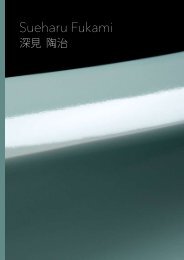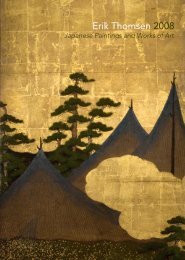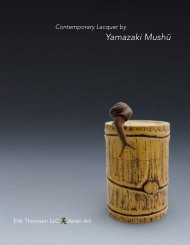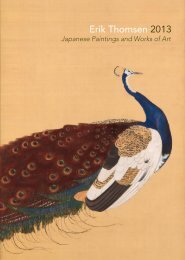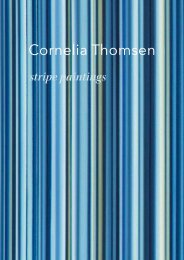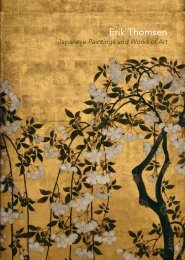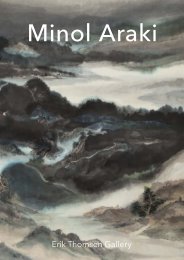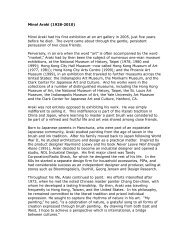View publication (pdf file 6.5 mb) - Erik Thomsen
View publication (pdf file 6.5 mb) - Erik Thomsen
View publication (pdf file 6.5 mb) - Erik Thomsen
- No tags were found...
You also want an ePaper? Increase the reach of your titles
YUMPU automatically turns print PDFs into web optimized ePapers that Google loves.
22Maeda Chikubōsai I前 田 竹 房 斎 初 代 (1872 –1950)Wide-Mouthed Flower Basket 広 口 花 篭Shōwa Period (1926 – 89), dated 1942H 19 ½", D 10"(49.5 cm, 25.5 cm)Ikebana flower basketMadaken ba<strong>mb</strong>oo, Hōbichiku ba<strong>mb</strong>ooand rattan.Incised signature on the bottom:Chikubōsai kore tsukuru »Chikubōsai made this«Box inscription, outside:Hiroguchi hanakago »Wide-Mouthed Flower Basket«Box inscription, inside: Autumn day of the 2602ndyear of the Japanese Imperial calender (=1942).Senyō Kuzezato Chikubōsai kore tsukuru»Chikubōsai of the Senyō Studio in Kuzezato madethis« with square red seal mark reading Chikubōsai.This large ikebana basket is made in the Chinesekaramono style, with exacting symmetry andperfection.The bottom is made of ba<strong>mb</strong>oo in the circularamida kōami plaiting, where the ba<strong>mb</strong>oo strips arearranged tangentially to form a circular opening,which is reinforced by two larger ba<strong>mb</strong>oo piecescrossing the center. One of these pieces bears theincised signature reading Chikubōsai made this.The sides are made of narrow strips of split madakeba<strong>mb</strong>oo, plaited in a variation of the ajiro ami twillpattern. The sides are reinforced by six verticalba<strong>mb</strong>oo ribs, which are tightly plaited with rattan.The rim is plaited in no less than five differentpatterns. The handle is made of three Hōbichikuba<strong>mb</strong>oo sections, decorated on the top with fineknotting and held to the body at ten points usingtight rattan knotting.The basket comes with its original fitted kiri-woodtomobako box bearing the inscriptions, signatureand seal mark of Chikubōsai.Chikubōsai was one of the greatest basket makersof the Kansai region. He was active in the goldenage of Japanese basketry, 1910 – 40, when high-qualitybaskets such as this one were eagerly collectedby the Japanese and used in the tea ceremony.Chikubōsai remained active through the secondWorld War and continued to make outstandingbaskets in those difficult years, such as this one in1942 and another, item17 in our 2009 <strong>publication</strong>,in 1941. 1His son, Chikubōsai II (1917 – 2003), continued thebasketry tradition and was named Living NationalTreasure for ba<strong>mb</strong>oo crafts in 1995.82 83



